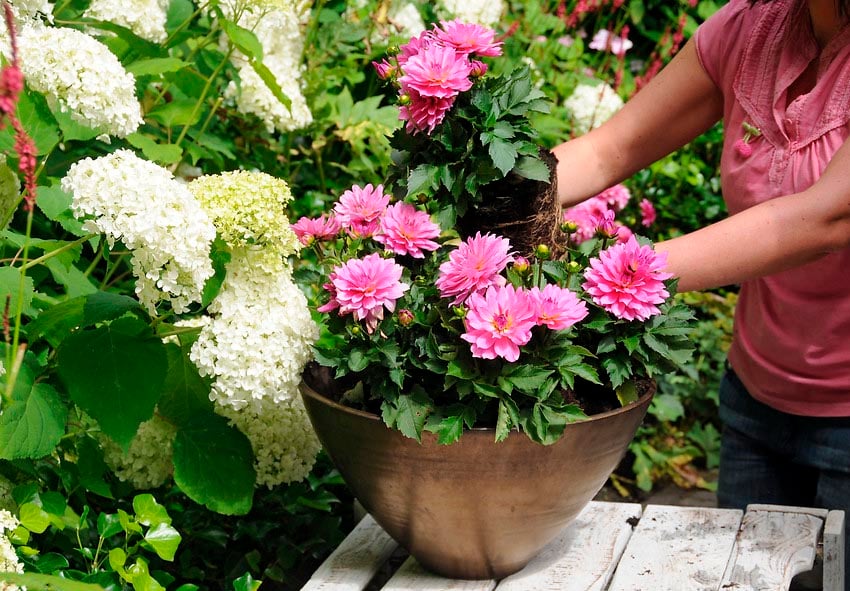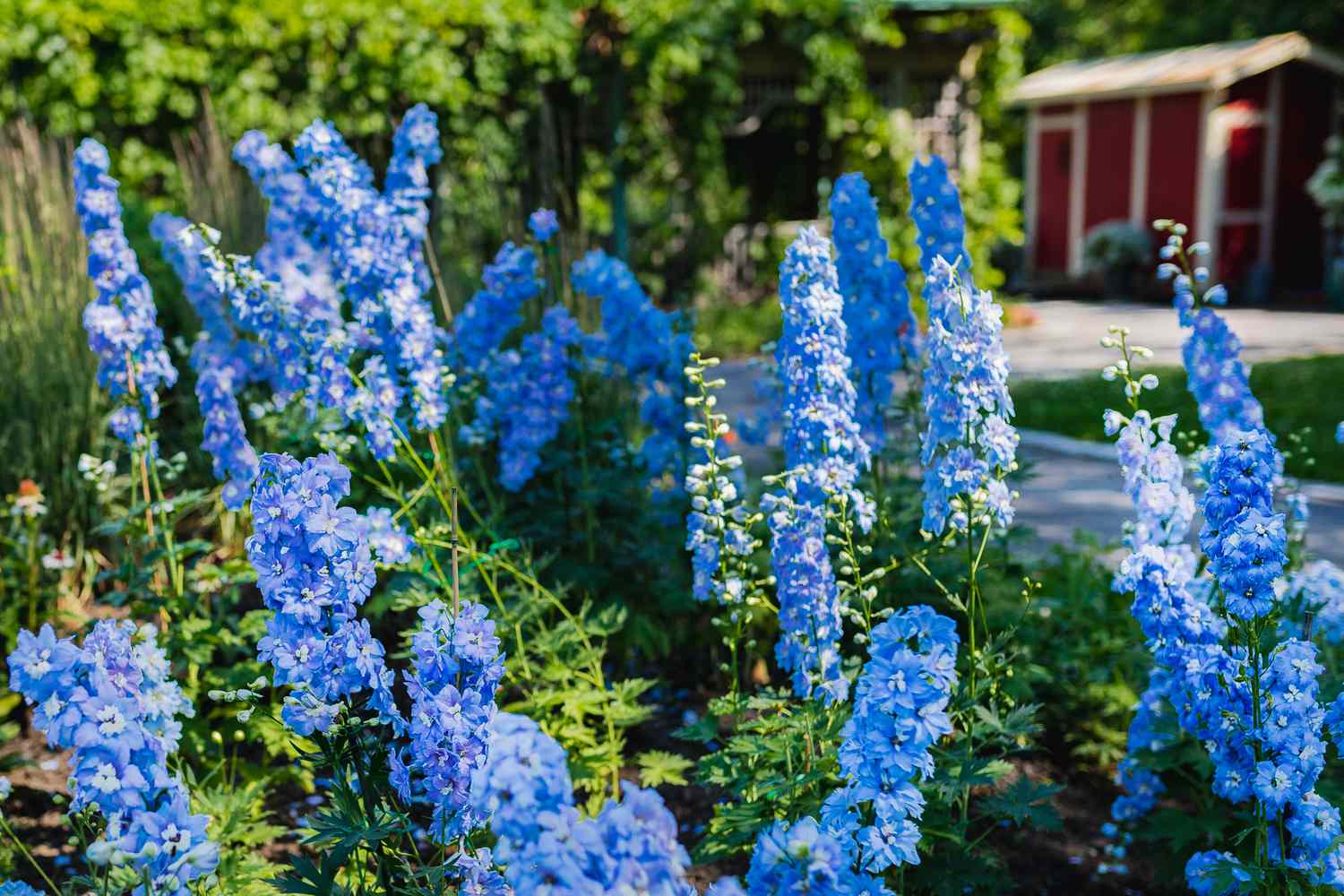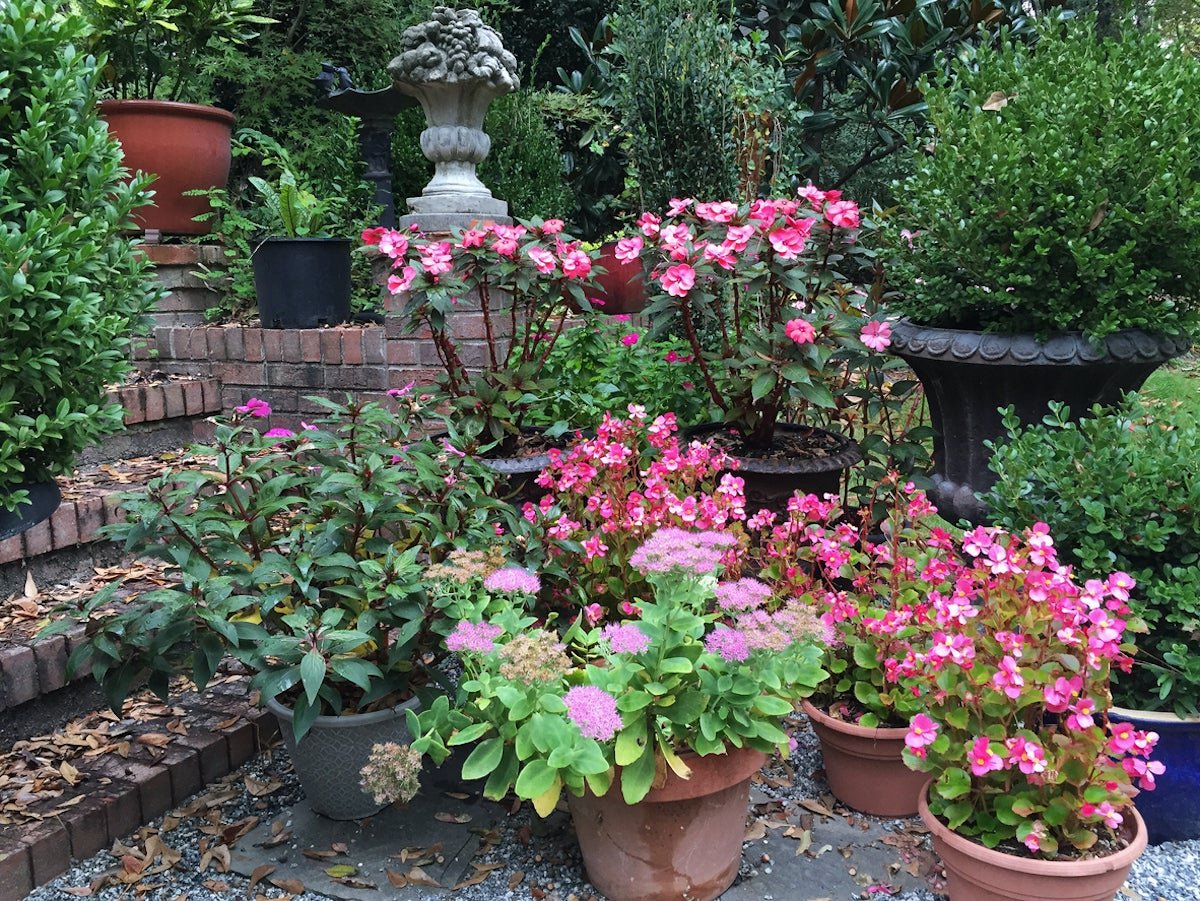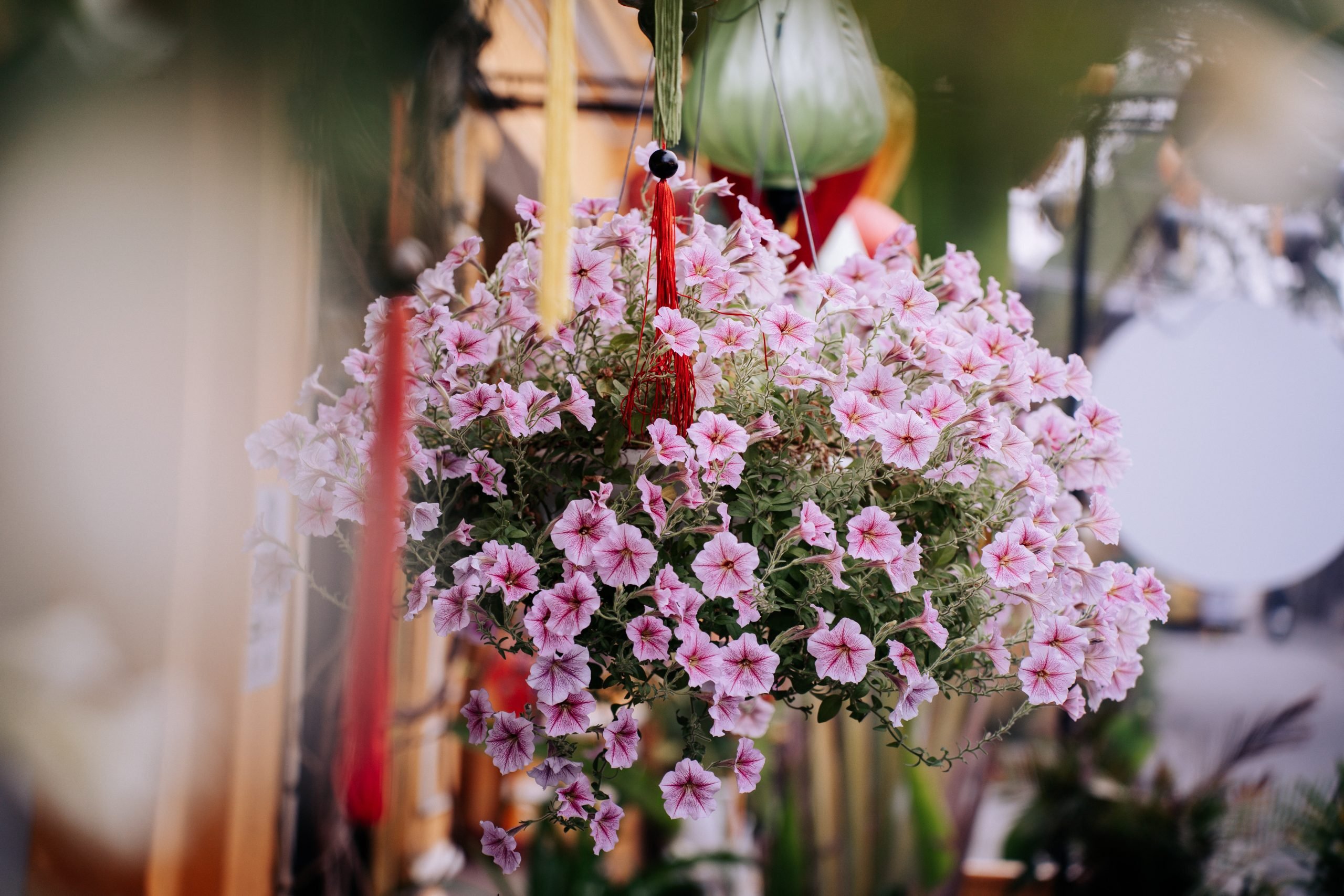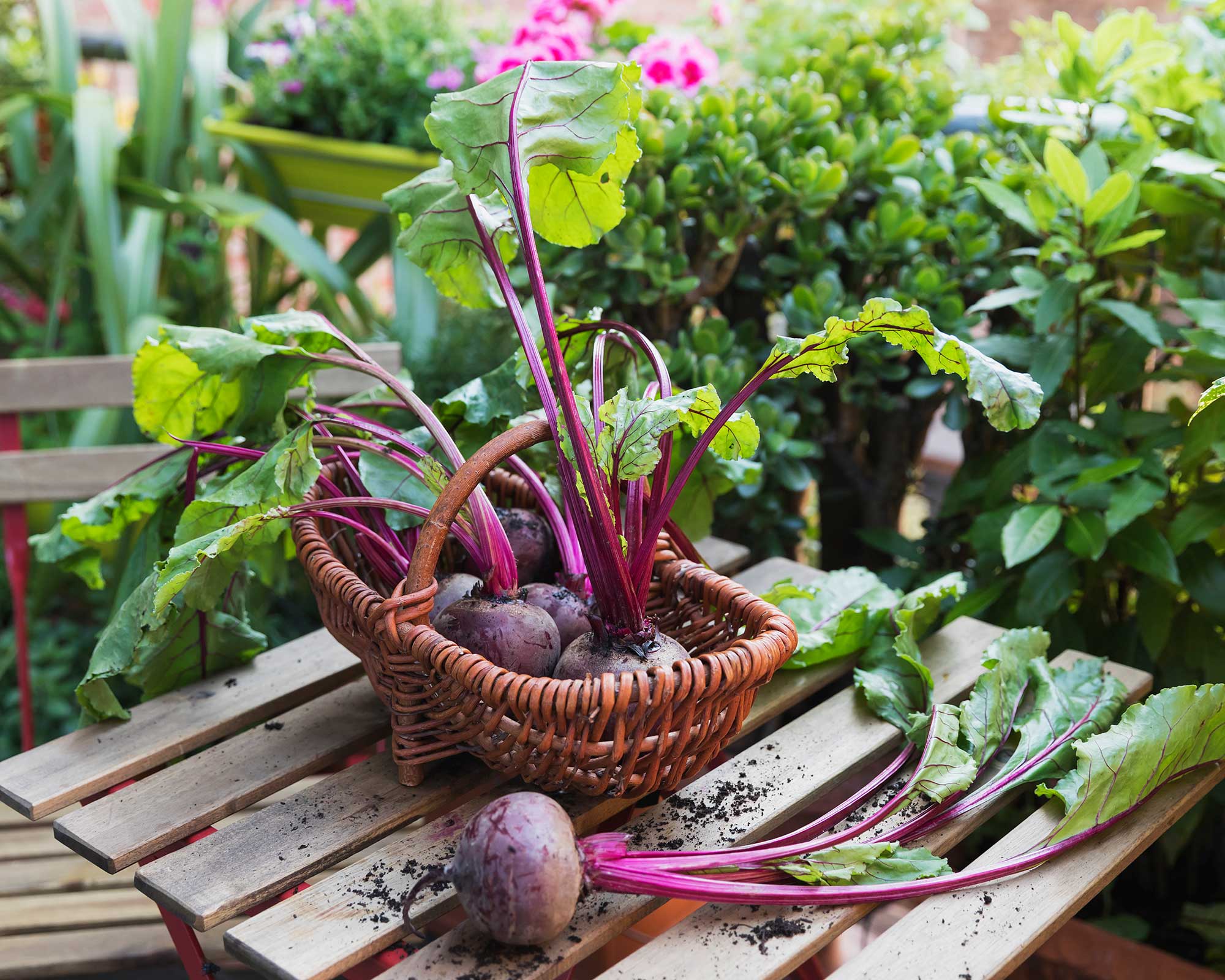The Complete Guide To Grow Dianthus In Containers
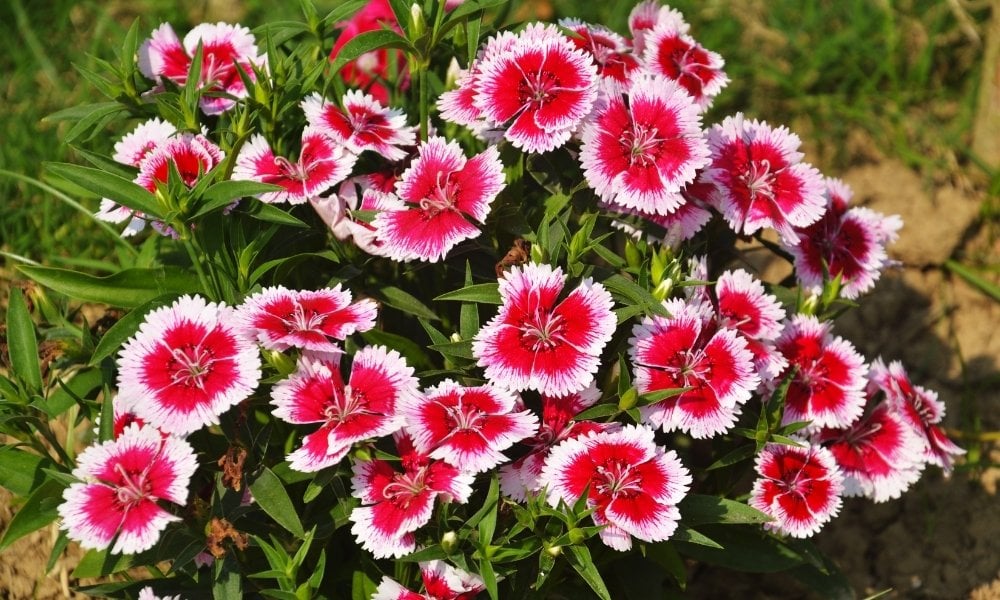
Table of Contents
Dianthus (Dianthus Chinesis) is your best bet if you like the way. Carnations appear, but they want a plant that is simpler to grow and maintain. The genus Dianthus contains about 300 species. These adorable little perennials produce many aromatic, fringed flowers in a compact form. The plant produces lovely white, pink, or red flowers that stand out beautifully in your backyard garden’s lush vegetation. Native to Europe and Asia, they can tolerate a range of soil conditions and are hardy and drought-tolerant.
This flowering plant belongs to the Caryophyllaceae family. Planting pretty Dianthus, or “Pinks” as they are sometimes called, in planters and window boxes is a great idea. The blossoms, which may reach heights of between 15 and 46 cm, are prized for their fragrant blend of spicy cinnamon and clove.
A few hardy annuals, biennials, and even a few are categorized as dwarf shrubs, though the majority are herbaceous perennials.
Overview of Dianthus
|
GENUS NAME |
Dianthus Chinesis |
|
COMMON NAME |
Clove Pinks or Pinks |
|
FAMILY |
Caryophyllaceae |
|
HEIGHT |
Height varies from 4 to 36 inches tall, depending on the kind. |
|
ZONES |
3 to 10 |
|
DROUGHT TOLERANCE |
High |
|
DURATION |
Annual, Perennial, Biennial |
|
BLOOM TIME |
Spring to early summer; some rebloom intermittently or continuously through summer and fall. |
|
FLOWERS |
White, pink, or red flowers |
Characteristics of Dianthus Chinensis
Flowers have ruffled petals and can be singular, semi-double, or double. Except for blue, they are available in almost all colours and patterned bi-colours. The strappy, grass-like foliage comes in green, blue-green, and silver-green hues. Some have thick bands of intense crimson, while others have rings of colour around the petal margins. Many display double blossoms; others have clusters of flowers at the top of the stem.
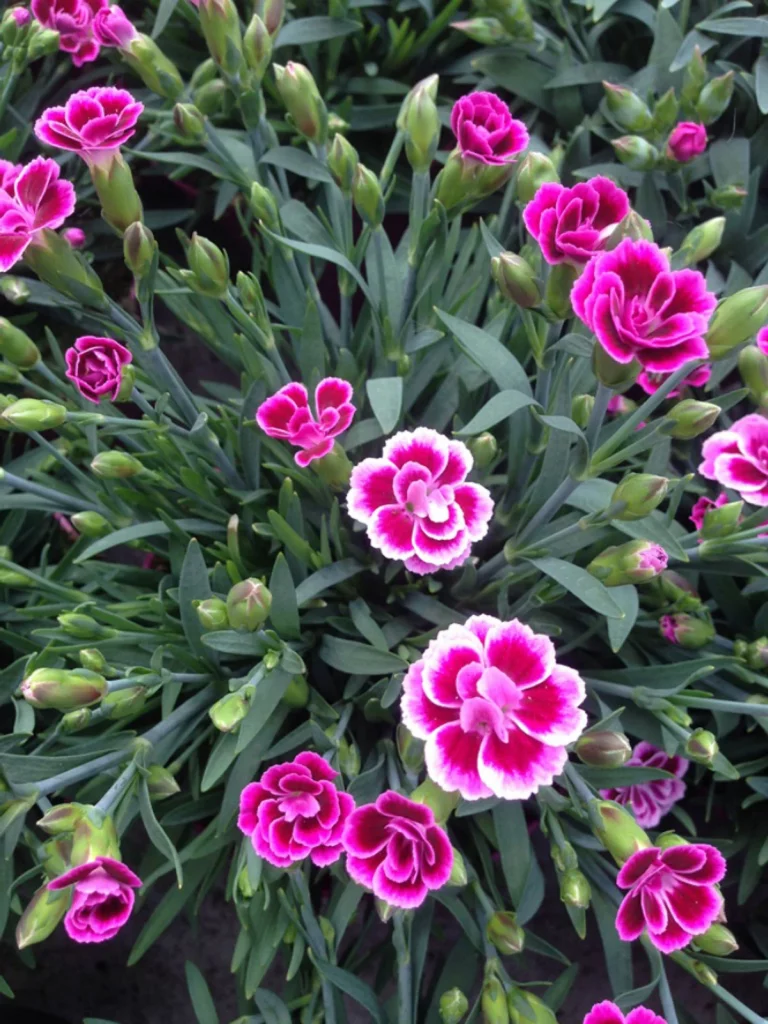
Best grown in spring, making your garden/balcony beautiful and eye-catching. GIt’srowing them in containers is simple; all you need to do is take care of them, and here we are to help.
Varieties of Dianthus Chinensis
1. Arctic Fire Maiden Pinks
The mat-forming plant Dianthus deltoids Arctic Fire’ is an excellent ground cover. The leafy mound is covered in dozens of small, single, highly fringed flowers in red, pink, or white colours in the late spring and summer. At dusk, the blossoms begin to close.
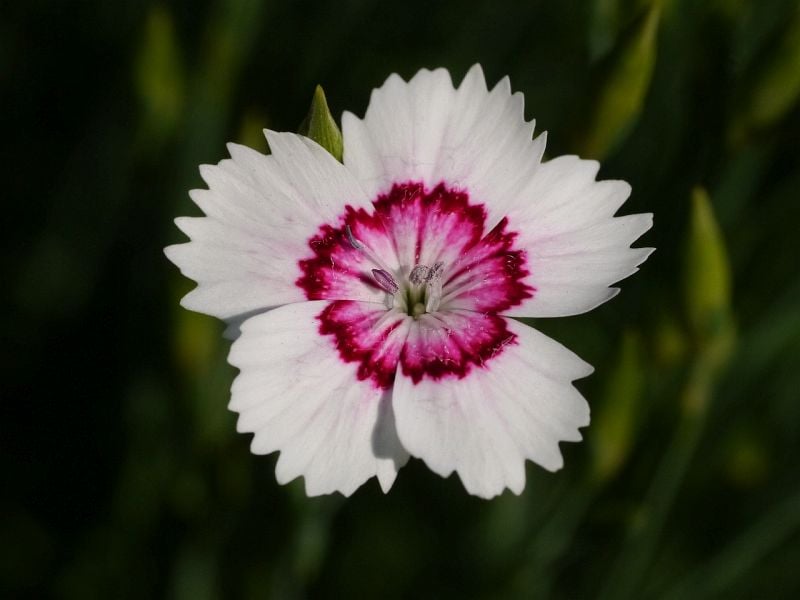
2. Blush Pink Diamond
Due to its great degree of consistency in plant habit, Blush Pink Diamond provides excellent garden performance in the spring and autumn. Diamond Blush Pink has a distinctive appearance since its blossoms begin as white, turn pink, and turn rose as they grow.
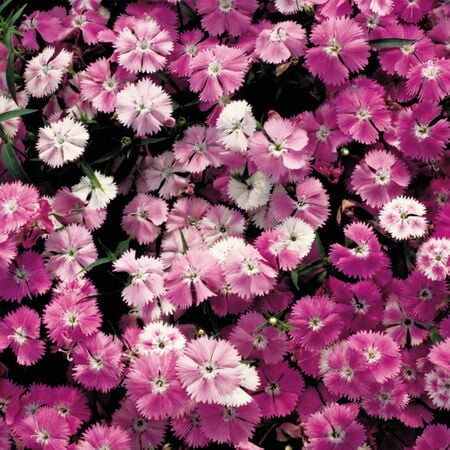
3. China Pink
Dianthus chinensis, sometimes referred to as China pink or rainbow pink, is a species of Dianthus that is indigenous to northern China, Korea, Mongolia, and southern Russia. It is a perennial herbaceous plant that reaches 30 to 50 cm high.
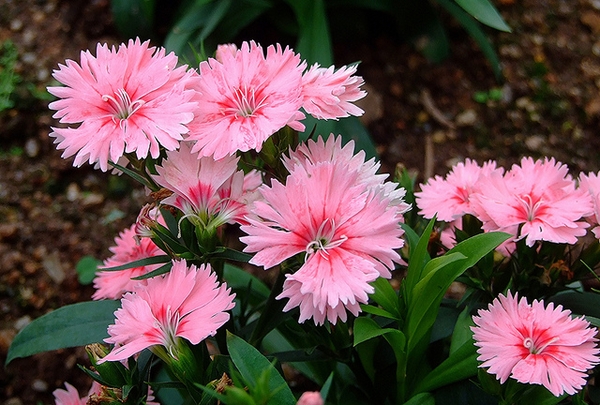
4. Dianthus Floral Lace Crimson
It has the largest bloom in Dianthus with early flowering. It performs well as an annual or biennial in gardens in challenging conditions. This specie has beautiful lush green leaves.
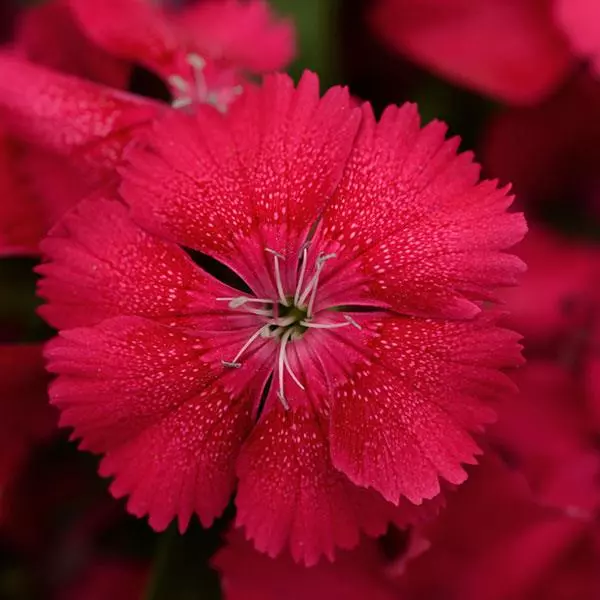
When to Grow Dianthus
Before planting Dianthus in pots, wait until the final winter frost has passed and the soil has warmed up. When starting plants indoors from seed, plant the seeds six to eight weeks before the last frost. The seeds sprout at 18 to 21 degrees Celsius in about one to two weeks. Later, you can move them outside in containers. They should be planted in the spring and summer.
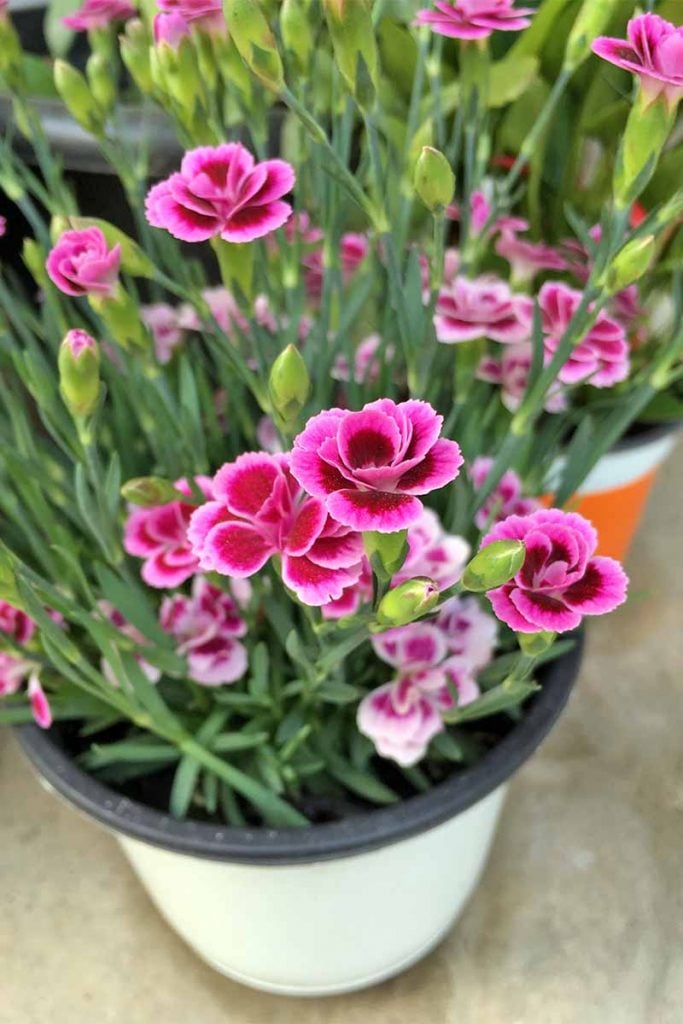
Where to Grow Dianthus
For a touch of romantic texture and colour, Dianthus grows nicely in containers. It is space-efficient and mobile, so it can be arranged to fit wherever you choose to set up your garden. You can cultivate Dianthus chinensis in your garden, particularly towards the borders. Given that they grow up to 2.5 feet and have lovely blossoms, this is the perfect place for them.
Dianthus flowers must be planted in an area with at least 6 hours of direct sunlight each day. They struggle in areas with natural light and high temperatures. So they need appropriate afternoon sun protection in warmer areas.
They require alkaline, well-drained soil. Dianthus also requires adequate drainage. Ensure that the container includes additional drainage holes. Dianthus dislikes having its roots submerged in water. A permeable material that can breathe and won’t get weighed down by water works best for planters.
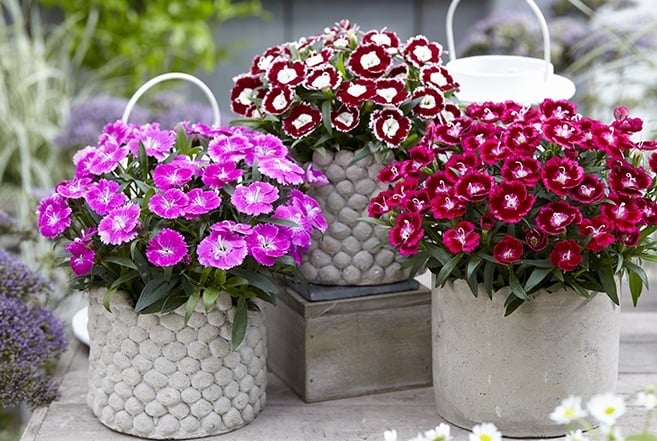
How to Grow Dianthus in Containers
Firstly, choose Dwarf and mat-forming Dianthus plants as they will maintain their tiny size and avoid crowding an area. Combine with other small annuals or perennials that do well in the same growing circumstances in containers, rockeries, or beds.
Select a pot with good drainage holes at least 200mm wide. Put these containers in direct sunlight. Use a high-quality potting mixture along with any soil of your choice. Before planting, give the plants a rich soil that has been pushed into a depth of 12 inches with 2-4 inches of well-rotted compost. In the spring, reapply the compost top dressing.
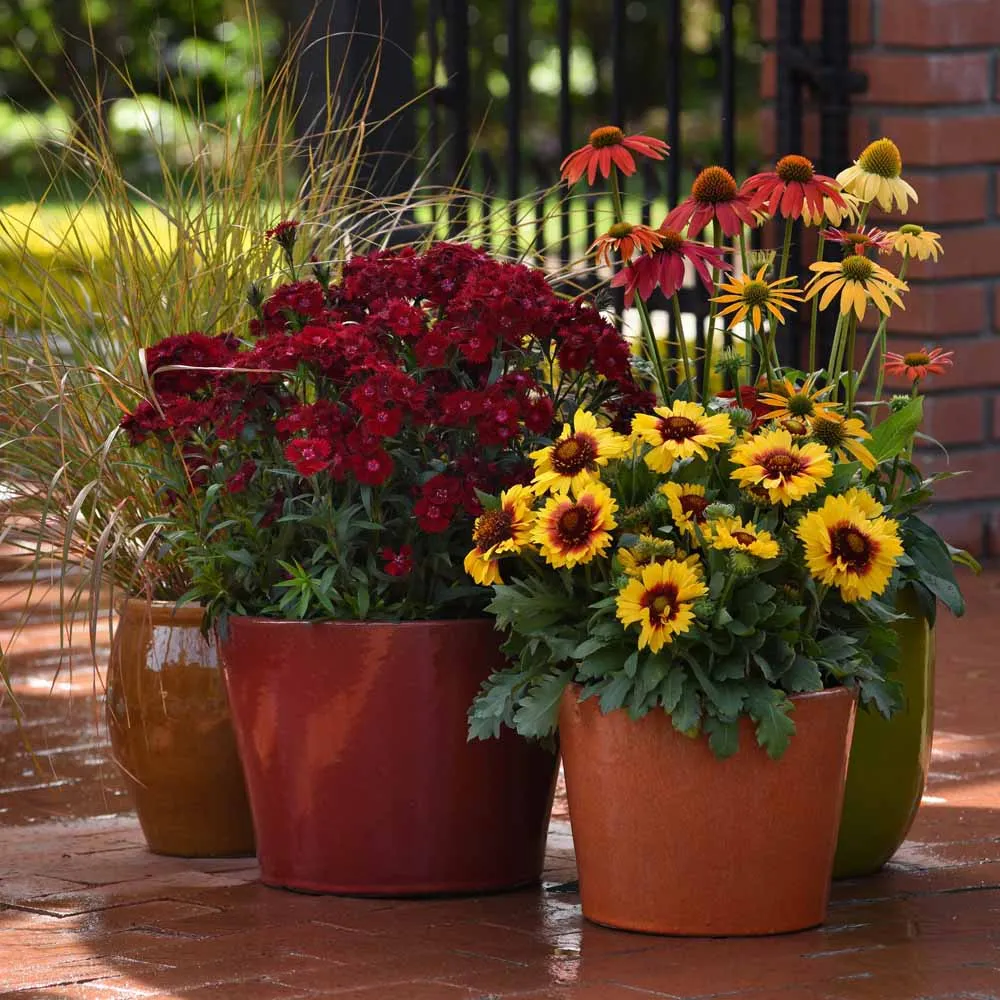
Then dig a hole almost twice the size of the root ball and space your dianthus plants 6 to 18 inches apart, depending on the variety. If you apply mulch, use a thin layer because the stem’s health depends on air circulation. Gently add water, keeping the mixture only slightly moist.
To achieve optimal growth, seedlings and plants must be placed at the same depth as the container they are growing in. Deadheading the plants after their first bloom can help ensure a second bloom later in summer or early in the fall.
When wintertime temperatures drop, you may want to transfer your containers to a warmer area and provide them with additional protection.
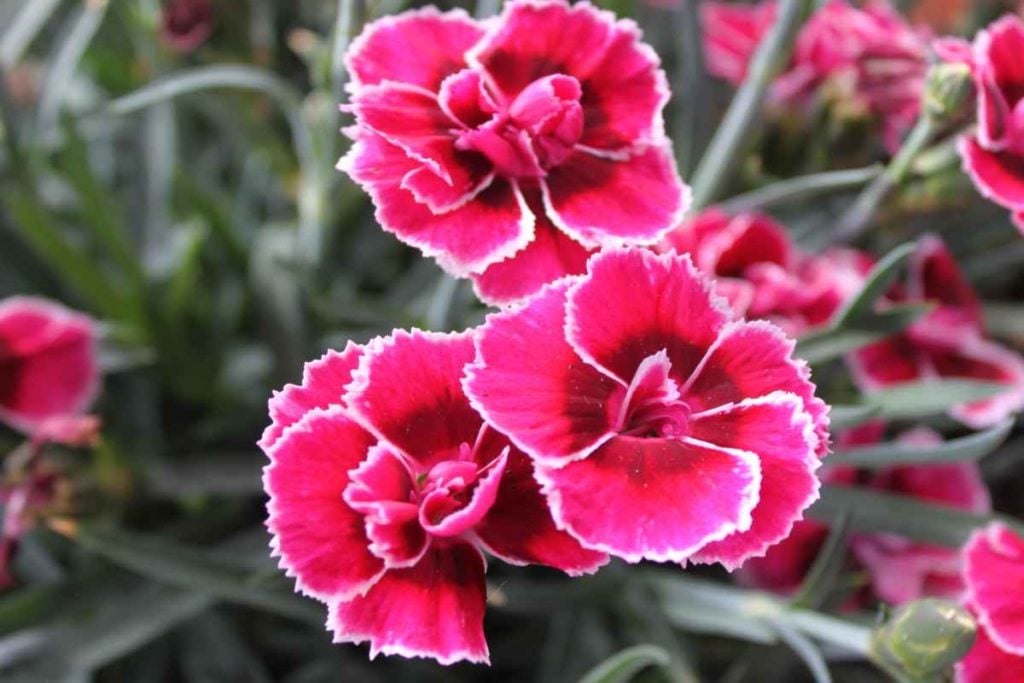
Vascular wilt is one of the main problems dianthus plants face. Wilt, a fungus that can eventually kill an entire plant, is characterized by soft green stems that droop and finally dry up. Rotating your plantings periodically is crucial, avoiding any soil that appears infected.
Aphids and spider mites are typical plant pests that dianthus plants may struggle with. Until all indications of an infestation are eliminated, you can treat it with insecticidal soap or neem oil.
Dianthus requires light to medium maintenance. Despite being prone to fungal root rot, properly drained soil and hydration can help you prevent this problem.
In the spring to mid-summer, the Dianthus chinensis plant produced blooms individually or in tiny clusters. Their growing season is prolonged. Late spring is when flowers begin to bloom. In the summer, there is a noticeably lighter rebloom.
Due to its lovely placement in front of taller companion plants like roses, lavender, and decorative grasses, Dianthus is a multipurpose plant frequently seen in the front of a border or flowerbed.
Choose alpine plants like creeping phlox or stonecrops if you’re growing them in a container, or put them alongside popular annuals like pansies, petunias, and geraniums.
When spacing them with other plants, remember that they like to spread and can quickly fill a container during a growing season.
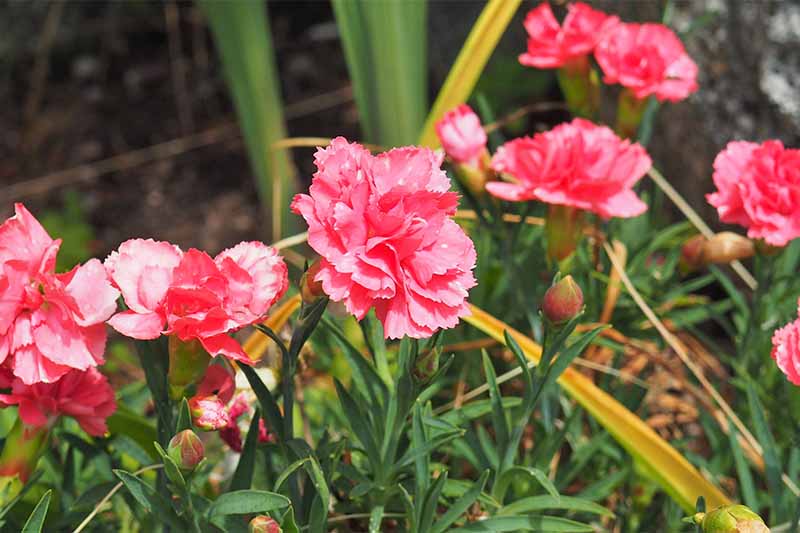
Points to Remember
- Light: Partial to Full Sun (At least 6 Hours a Day)
- Soil: Neutral to Slightly Alkaline(6 to 7.5 pH) Well-drained Soil
- Watering: Water once a week (Avoid Over-Watering)
- Temperature: Ideal Temperature is above 40°F.
- Fertilizers: Balanced Fertilizers (though not required)
- Death Heading: Need constant death-heading
To Sum Up..
Dianthus flowers should be at the top of your list if you’re seeking a versatile plant that is simple to care for and attractive to look at! This wonderful all-purpose plant is ideal for containers or as an edging in your garden. They also have a sweet, spicy scent, which makes them a great addition to seating areas, window boxes, and entranceways. The cooler months of spring and fall are the ideal time for planting.
Given the abundance of widely available types and how easy they are to produce and maintain, there is no reason not to include Dianthus in your landscape. Are you looking for similar plants for your garden? Let us know in the comments.
Frequently Asked Questions (FAQs)
What does Dianthus Stands For?
Pretty Dianthus, or “Pinks”, as they are often called, are perfect. Long in existence, dianthus flowers are regarded as the flower of the gods. Theophrastus, a Greek botanist, claimed the ideal combination of dianthus from the Greek words dios, which means “god,” and anthos, which means “flower.” They stand for adoration, passion, love, and dedication.
What Is the Best Soil for Dianthus in Pots?
It can handle clay, silt, or sandy soil. An open position is beneficial, along with well-drained soil. Dianthus prefers neutral to slightly alkaline soil(6 to 7 pH). Pick a location where they won’t compete with other plants or be crowded. Make sure to mix the soil with a high-quality potting mixture.
How Can My Dianthus Produce More Blooms?
Removing old blossoms on all types of Dianthus is One of the best ways to ensure that your plant produces the most blooms possible. This stimulates the plant to produce more leaves and flower buds rather than turning its existing blossoms into seeds by directing its energy in that direction.
Is Dianthus Poisonous to Humans?
The bitter base of the petal is not edible. Due to their slight toxicity, the leaves shouldn’t be consumed. Members of the Dianthus genus contain triterpenoid saponins in their leaves. Although some people may experience skin irritation from the plant, carnations are often not considered dangerous to humans.

